February is LGBTQ+ History Month and to celebrate the Museum of Zoology is sharing the story of giraffes and the work of scientist Anne Innis Dagg. Read on for our tutorial on how to create your own rainbow giraffe fabric, perfect for your next sewing project!
When we see wild animals behaving in a particular way, one of the first things we ask is ‘why?’. Our own experiences, as humans, will often shape the explanations we come up with. Try these examples together:

Here’s a bonobo showing its teeth. Why do you think it is doing this?
Bonobos and chimpanzees will communicate by showing their teeth and ‘grinning’. However, this is often to reduce nervous tension, rather than show happiness or humour.
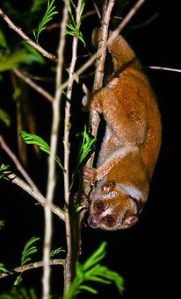
Slow lorises look cute and have been shown holding their arms up when ‘tickled’.
In fact, this behaviour is warning sign. They have glands underneath their armpits that ooze a type of toxic oil. They hold their arms up to lick those glands, to combine the oil with other toxins in their saliva. This makes for a nasty, venomous bite.
It is easy to make a guess at what an animal is doing, especially when the animal’s behaviour looks so much like human behaviour. However, describing animal behaviour in the same way as we would human behaviour can cause misunderstandings.
Anne Innis Dagg
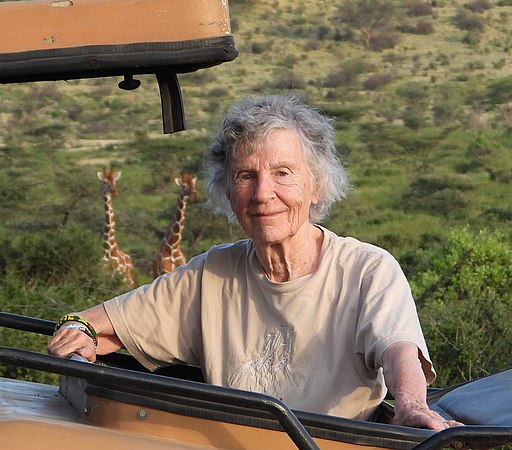
Anne was the first scientist to study animal behaviour in the wild in Africa. Her work in the 1950s also made her one of few female scientists in the field at that time.
Anne brought new ideas to the study of animal behaviour, challenging ideas that male animals are always stronger than females.
The language we use matters. Anne disliked the use of human-based language to describe animal behaviour. Words such as ‘dominant’ to describe males or ‘timid’ and ‘flirtatious’ to describe females, despite the animals showing the same behaviour, changes how we view that behaviour.
As such, Anne advocates for the work of female and LGBTQ+ scientists, who can improve our understanding of the natural world by offering a wider diversity of perspectives.
Giraffes
Today we would like to talk about giraffes. This is because they have often been called the ‘gayest’ animal.

Anne Innis Dagg spent over 400 hours observing giraffes in the wild, noting down how they behaved with one another and changing our understanding of giraffe behaviour.
Anne has often been called the “Jane Goodall of Giraffes”
Remember, the language we use matters. Sexual identities such as gay, straight and bisexual are terms that we use as humans to describe ourselves. Animals do not have these identities. We can however describe animal behaviour as same-sex or opposite-sex behaviour.
Giraffes have earned their title because 90% of the times when two giraffes pair-up and show mating-like behaviours, the pairs are made of two males.
Giraffe society has a well-defined structure in which the position of an individual is decided by a number of different things: age, size, and boldness. It was once believed that when two males got together, it was a way for one male to gain power over another. However Anne’s observations show that the giraffes were pairing up because they wanted to, not because they were trying to work out who was stronger.

If we recognise the biases that we hold as humans and let go of the boxes that these biases create, we can better understand the rich social lives of many animals and gain a better understanding of the world in which we live.
Create some giraffe-patterned fabric
Inspired by the giraffe’s coat, this craft for LGBTQ+ History Month 2022 is to create some printed fabric for your next sewing project.
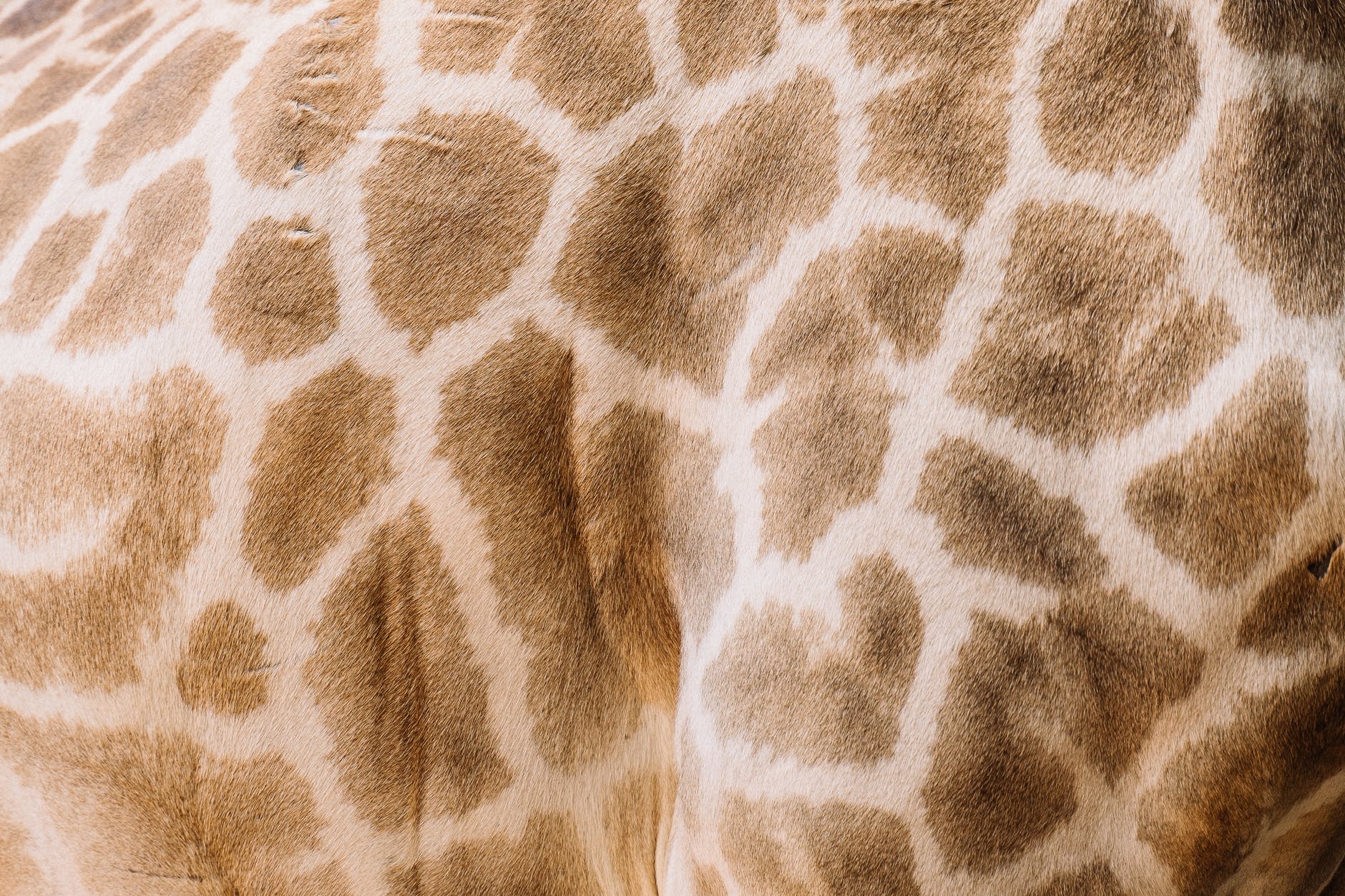
Giraffe coats are made up of a pattern of geometric shapes with space in between. This pattern helps young giraffes to camouflage among the trees. While different species will have particular qualities that help us to tell them apart, a giraffe’s coat pattern is individual to them.
Create a pattern that is individual to you.

You will need:
- Light-coloured fabric
- Paints or inks
- Paint palette or paper plate
- One potato
- A knife and chopping board (take care and ask for help when using sharp tools)
- Something to cover your table or surface with, like newspaper
- Gather your materials and put your paint or ink out onto a palette or paper plate.

We put our paint out in rainbow order to help with printing.
- Lay your fabric out ready, ensuring that the table underneath is covered to avoid mess.
- Using a knife and chopping board cut your potato in half. Place one half onto the chopping board, cut-side down. Use the knife to carefully cut away the round edges, creating a straight-edged shape on the bottom surface.

- Repeat with the second potato half. You’ll end up with two slightly different shapes to work with.
- Use brushes to put paint onto the flat, bottom surface of your potato halves.



Choose to create single coloured shapes or paint stripes of colour in the order you would like them to be printed.
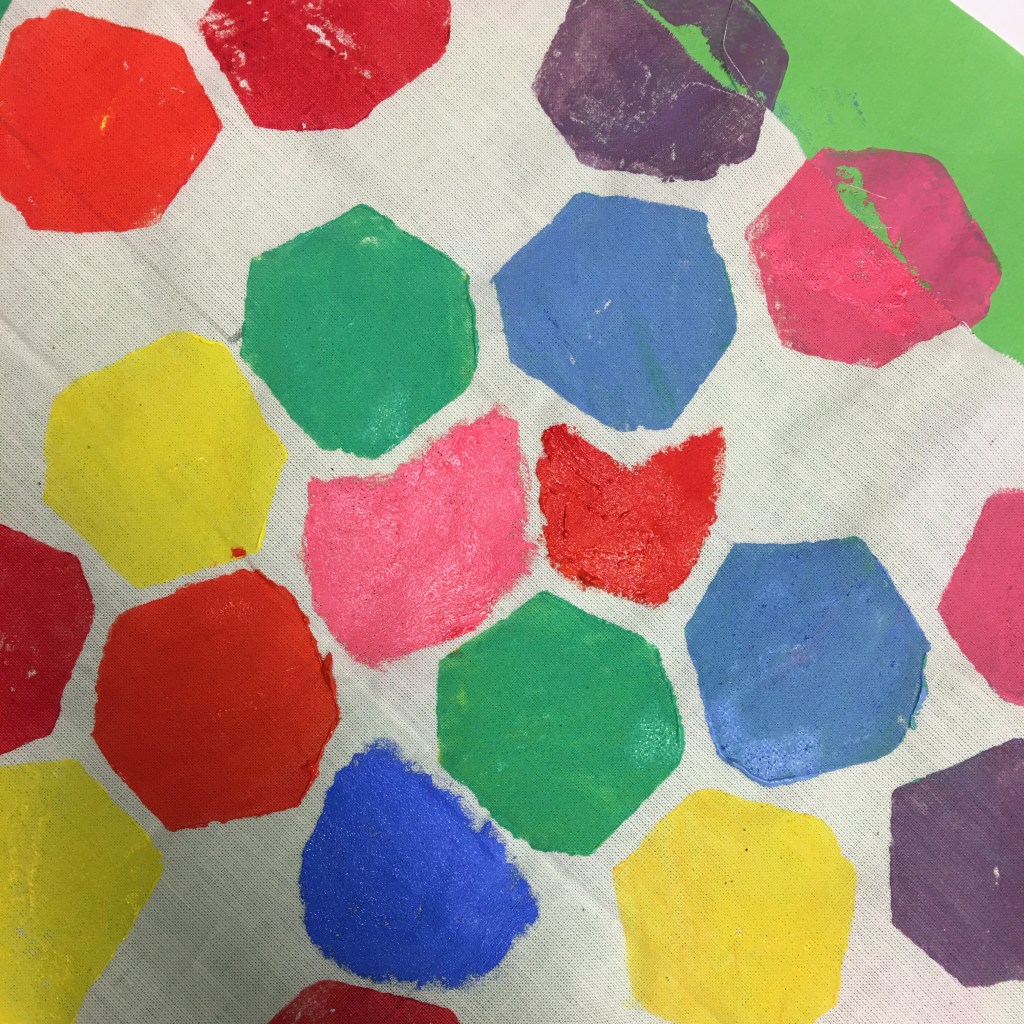
- Press the painted side of your potato onto the fabric.
- Repeat this process, using different colours. Fill up your fabric with these geometric shapes.
Top tips:
- Be careful to leave gaps between your shapes. It will better match a giraffe’s coat pattern.
- Your potato can be washed between colours to avoid mixing them.
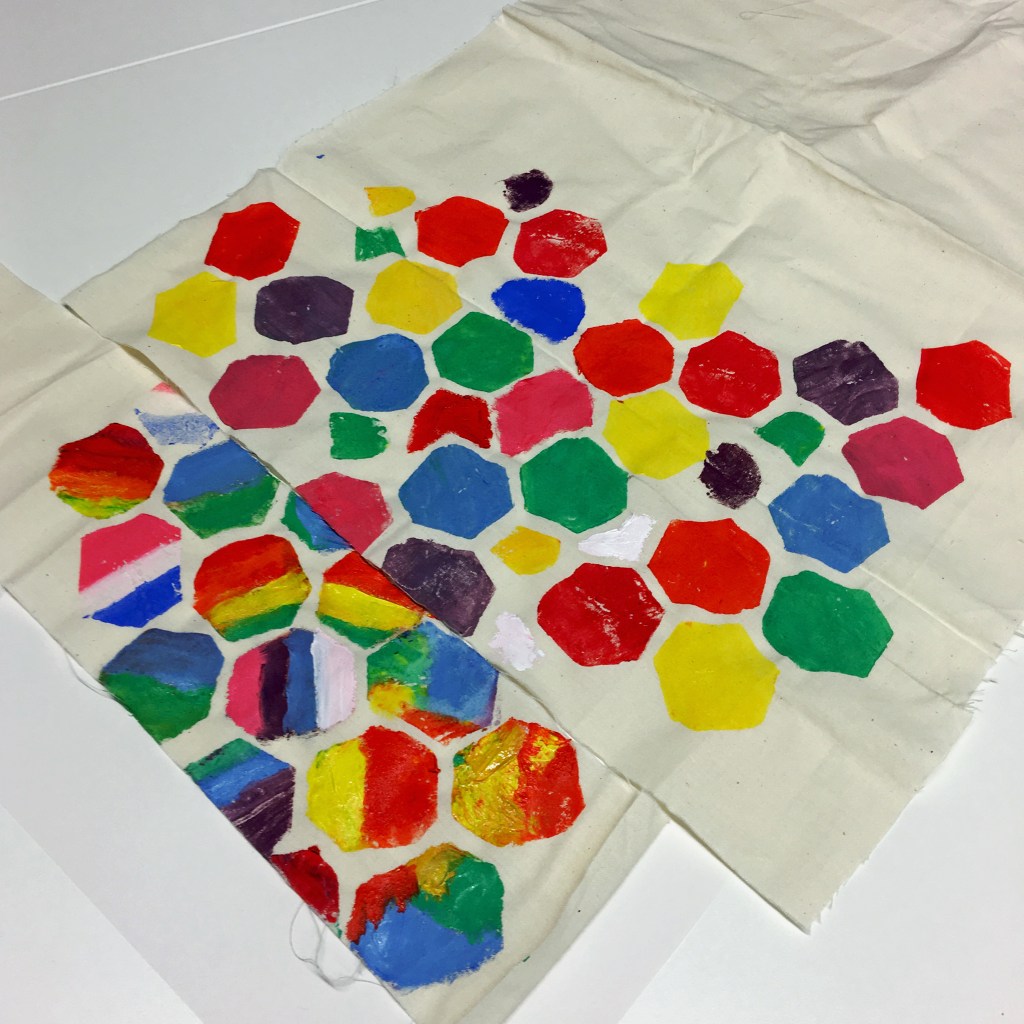
Show off your fabric with pride by creating with it. Here’s some ideas to get you started:
- Cushion covers
- Tote bag
- Book cover
- Table placemats
Share your makes with us on Facebook, Twitter or Instagram. To see your make feature on our Community Gallery, submit it via the form here: Community Gallery Submission Form
Happy LGBTQ+ History Month from the Museum of Zoology!
Create a whale bookmark and discover how ceteceans are changing how we think about sexuality and ‘gender’ in the animal kingdom: Whale bookmark: celebrating LGBTQ+ history month
Find out more about LGBT+ History Month here: lgbtplushistorymonth.co.uk
For more rainbow family activities from the Bridging Binaries (LGBTQ+) project see: Look, Think, Do: Bust of Antinous from the Fitzwilliam Museum and Look, Think, Do: Rosa Bonheur a pony in a landscape

